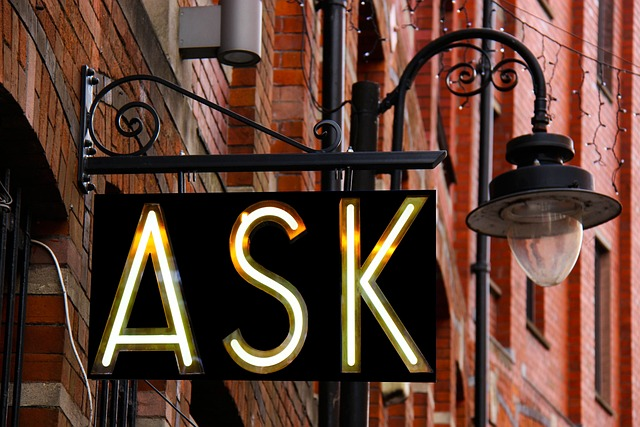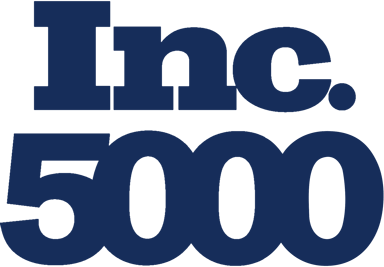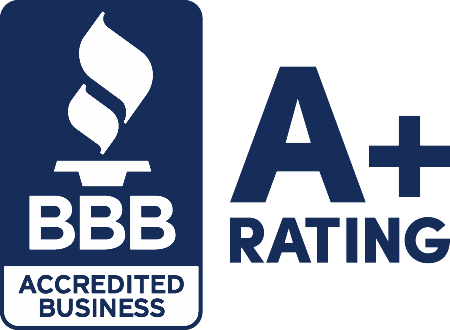What are High-Risk Business Loans?
The term “high-risk business loan” refers to any financing package offered to businesses that lenders consider risky. Factors that could make a lender view a business as risky include poor credit scores, inconsistent revenue, or being in a volatile industry.
The high-risk lenders that offer these loans usually try to offset the risk with high interest rates, shorter loan terms, and frequent repayment schedules. Some high-risk business lenders will also require collateral to help mitigate their risk. If the borrower defaults, the lender claims the collateral to recoup its losses. Collateralized loans are also known as secured loans since they provide security for the lender.
Getting unsecured high-risk loans is possible, which means they don’t require collateral. However, unsecured loans will usually have higher interest rates and fees. In addition, lenders that offer unsecured loans might still require a lien on the business or a personal guarantee.
A blanket lien, also called a UCC-lien, allows lenders to come after any business asset in the case of a borrower default. A personal guarantee means that you’re personally responsible for repaying the loan, which circumvents limited liability protections. If you default, the lender can come after your personal assets to recoup its losses.
Despite the costs, small business owners will turn to high-risk loans when they can’t qualify for conventional financing. The funding can still help businesses maintain operations or expand. These loans are usually short-term solutions to solve an immediate funding need or take advantage of a time-sensitive opportunity.
How do High-Risk Business Loans work?
There are several forms of high-risk business financing, and each functions differently. Here are the most common financing structures used for high-risk borrowers.
Short-Term Loans
Business term loans are when a business receives a lump sum and repay it plus interest in fixed monthly payments. A traditional term loan would carry a low-to-moderate interest rate, low fees, and long repayment terms of several years.
Short-term loans are a modified version of these traditional structures designed to offset lender risk for small business owners that can’t qualify for a traditional term loan. The terms are shorter – usually maxing out at 18 or 24 months and as short as 3 months. In addition, they also carry higher interest rates and fees, such as an origination fee.
Merchant Cash Advance
A merchant cash advance (MCA) is technically not a loan but rather an advance of funds to purchase future receivables. MCA companies will review a merchant’s previous sales receipts to determine an advance amount, which the business receives as a lump sum.
The business repays the advance with a percentage of its future daily sales, known as the holdback rate. The holdback rate typically falls between 8% and 15%. The amount you fluctuates with your sales.
Most merchant cash advances use a factor rate instead of an APR. Factor rates are simple to calculate, but the interest applies as soon as the MCA goes through, so you can reduce your interest by paying early. MCA factor rates are usually between 1.09 and 1.15, with terms between 3-24 months.
Suppose you received an MCA advance for $100,000 at a 1.10 factor rate. You’d multiply the advance by the factor rate, $100,000 x 1.10 = $110,000, meaning you’d pay $10,000 to borrow $100k.
The terms, factor rate, and holdback rate you receive all depend on your credit profile. In other words, the riskier the lender views your business, the higher the holdback and factor rates, and the shorter the terms.
Invoice Factoring
Some businesses sell on credit, meaning they deliver goods or services to the customer and issue an invoice for future payment. An MCA wouldn’t work for these businesses, as real-time payments don’t occur.
However, they can still sell their future receivables with invoice factoring (aka accounts receivable factoring). In this process, a third-party factoring company purchases the invoice with an advance that is usually between 85%-95% (advance rate) of the invoice value.
The factoring company makes money by purchasing the invoices at a discount rate, usually between 1%-5%. The factoring company then owns the invoice and collects payment from your customers. Once the customer pays the invoice, the factoring company recoups the advance amount and fees and issues the remainder to your business.
Bad Credit Business Loans
As their name implies, bad credit business loans are designed for small business owners with a low credit score, typically below 600. There are various bad credit loans, including the financing methods mentioned above.
Other bad credit business loans include:
- Asset-based loans.
- Business lines of credit.
- Equipment financing.
- Working capital loans.
- Revenue-based financing.
Like other high-risk loans, bad credit financing includes higher interest rates and fees with shorter repayment terms and frequent payment schedules (usually daily or weekly).
One way to think of bad credit business loans, and high-risk loans in general, is as a form of bridge financing. You can use these high-cost financing methods to solve immediate working capital needs in the short term while reducing your business’s perceived risks so that you can qualify for more advantageous long-term financing in the future.
What makes a small business High Risk?
Understanding when your business is “high risk” requires knowing how lenders view you. Here are some of the most important things lenders look at when determining their risk. Improving any of these factors will help you with conventional lenders.
Credit Score
The first and most obvious factor in lending is your credit score. Lenders will look at both your personal credit score and your business credit score. Most traditional lenders, like banks and credit unions, require a personal credit score of over 675.
Alternative lenders are usually able to work with lenders with a credit score of 600+, although that’s when business owners start to become high risk. Anything below 600 would indicate a high-risk borrower.
Time in Business
Traditional lenders usually require at least two years in business, while online lenders might only require six months to one year of business history. Startups and younger businesses are considered riskier because they are unproven.
Annual Revenue & Cash Flow
Many lenders prefer businesses with high annual revenue, typically over $100k. Equally important as revenue is your cash flow since that’s the primary source of repayment. Businesses with low or inconsistent cash flow are considered risky.
The Five Cs of Credit
Lenders also determine credit approval and rates using the “five Cs” of credit. Several of these are related to the above factors as well.
- Character. Lenders determine an applicant’s character by looking at their credit history and track record of paying off debts. Again, the lower a credit score, the riskier.
- Capacity. Lenders determine a business’s capacity to repay a loan by analyzing its debt-to-income ratio (DTI). A good DTI is 35% or lower, and a DTI of 43% or higher is considered high-risk.
- Capital. Lenders prefer to work with businesses that can put up some of the capital needed for a loan. If you can make a down payment of 15%-20%, lenders are more likely to approve a loan or give a lower interest rate. You can still get a small business loan without a down payment, but that’s riskier for the lender.
- Collateral. As mentioned, offering collateral to secure a loan reduces the lender’s risk. Unsecured (zero collateral) loans are considered riskier.
- Conditions. The conditions lenders consider involve time in business, the stability of your industry, and how you plan to use the funds.
How to apply for a High-Risk Business Loan:
Follow these steps to apply for alternative business lending.
Step 1: Consider Your Needs
Before you begin the application process, take some time to make sure this is the right product for your individual needs. Will you be able to use the capital for your desired purpose? Is the repayment structure conducive to your cash flow? Do you know exactly how much funding to request?
Answering these questions ahead of time will make the rest of this process much smoother.
Step 2: Gather Your Documents
Expect to provide these basic documents during the application:
- Driver’s license.
- Voided business check.
- Bank statements from the past three months.
- Financial statements.
Step 3: Fill Out the Application
You can begin the application process by calling us or filling out our one-page online application. Either way, you’ll be asked to supply the information from the previous section along with your desired loan amount.
Step 4: Speak to Representative
Once you apply, a representative will contact you to explain the repayment terms, interest rates, and terms you qualify for. This will ensure that there are no surprises or hidden fees during repayment.
Step 5: Receive Approval
If approved, funds should appear in your bank account in 1-10 business days, depending on your loan type.
What are the advantages of High-Risk Business Loans?
While the term “high-risk loan” might sound scary, these financing arrangements do offer benefits to businesses when used appropriately. Alternative lenders and lending marketplaces are primarily designed to solve the problem for business owners who need funding but can’t obtain it due to perceived credit risk.
Many online lenders offer high-risk loans, and potential borrowers benefit from convenient online applications with minimal documentation. The qualifications are lower, and you can usually receive a determination on approval within 24 hours.
In addition to quick applications and approval times, most online lending platforms provide fast funding. Even if you’re considered “high risk,” you can apply for a loan, receive approval, and get your money within a few business days. Paying your loan off on time and in full can increase your credit rating, making your business less risky.
What are the disadvantages of High-Risk Business Loans?
As discussed, lenders offset their risk by charging more for these loans. You can still get credit approval, but it will cost you more in interest and fees.
High-risk loans also carry shorter repayment terms and more frequent payments. The combination of high rates and short terms can lead to high, frequent payments that strain your cash flow.
Falling behind on payments or not paying off a loan on time can lead to increased costs in late payments and further damage your credit, increasing your risk. Defaulting on these loans can cause you to lose collateral, personal assets, and prevent you from borrowing in the future.
High-Risk Business Loan Pros & Cons
Pros:
- Obtain business funding even when lenders consider you high risk.
- Quick and convenient online loan applications.
- Fast turnaround time for approval and funding.
- Potential to improve your credit rating with on-time payments.
Cons:
- Higher interest rates and fees.
- Short-term financing with frequent repayment.
- Often requires a down payment & collateral.
- Requires a personal guarantee, which puts your personal assets at risk.
Frequently Asked Questions
Here are the most common questions about high-risk loans for business.
Are High-Risk Loans a bad idea?
Hearing “high-risk” automatically makes these loans sound like a bad idea. And make no mistake; these loans are risky for your business. However, if you can reliably make the payments and pay the loan off in full and on time, these loan structures can help you solve business challenges while improving your credit so you qualify for more advantageous loans in the future.
Do banks offer High-Risk Business Loans?
It would be exceedingly difficult to find a traditional bank that would approve a high-risk loan. Most banks require a minimum credit score of 675 and want every aspect of the application to be just as highly qualified. High-risk commercial lenders are almost exclusively alternative online lending platforms. Most of these lenders specialize in saying yes when the bank says no.
What are my alternatives to High-Risk Business Loans?
You still have a few options if you don’t want to take out a high-risk loan but can’t qualify for conventional financing. You could try to borrow from family, attract investors, or crowdfund for investments.
Ultimately, your best option is to improve your “five Cs” so your business is not considered high risk. However, if you need funding now, you might have to take out a short-term loan while improving your credit profile.
High-Risk Business Loans – Final Thoughts
Businesses that traditional lenders perceive as “high risk” still have options to get the funding they need. However, you will have to pay more for it, and missing payments could exasperate the issues that made your business high risk to begin with.
That doesn’t mean you shouldn’t pursue these loans as a last resort, though. Instead, it means if you must take out a high-risk business loan, you should do everything possible to minimize the risk and costs.
You should consider the best loan option for your business needs and cash flow. Using a high-risk loan as bridge financing can work if you make timely payments. Avoid taking out more than you need, and ensure you work with a reputable lender.
The best high-risk commercial lenders are transparent about the costs, provide excellent customer service, and are rated highly. Look for Better Business Bureau accredited lenders with excellent online reviews.
Contact us if you have more questions about high-risk financing or want to apply for a small business loan. Our loan executives can answer your questions and help you find the best financing options for your business needs.



















